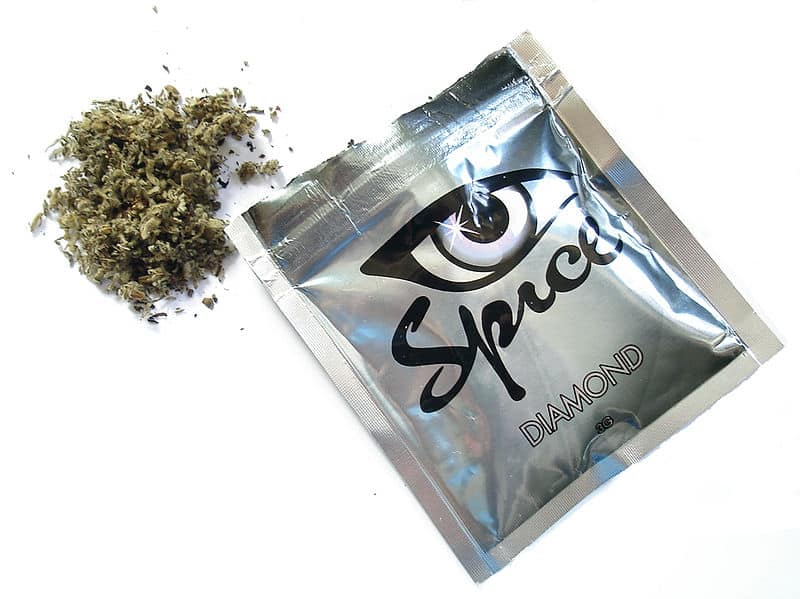“Synthetic” alone doesn’t necessarily invoke trust, but when it appears next to cannabis, the only thing it should invoke is fear. And we’re not talking about the kind of tingling, exciting fear just before the leap of faith into the wondrous new world that a mind-enhancing drug can open up. We’re talking about the fear of severe side-effects and even death which synthetic cannabis, aka Spice or K2, can lead to.
In Illinois, synthetic cannabinoids caused 56 people to bleed severely, and two of them subsequently died. In the first half of 2010 alone, there were 567 emergency visits nationwide due to synthetic cannabinoid consumption, and who knows how many could have been fatal if medical interference had come just a bit later.
What is Spice/K2 and where does it come from?
Spice and K2 are two of the most notorious brands of synthetic cannabinoids, which have become synonymous for this deadly alternative to cannabis. In fact, sometimes Spice has been sold as potpourri, room deodorizer, and incense with an actual warning “Not for human consumption.”
First appearing in the UK in 2004, Spice was sold as a legal version of cannabis for recreational purposes. It comes in playful, retro sachets which give off an innocently quaint vibe. It was marketed as an “all-natural” and “safe” alternative to cannabis, believed to be comprised of harmless herbs which imitate its effects. Additionally, it won’t show up in standard THC drug tests, contributing to its popularity.
How Spice/K2 works and why it’s dangerous?
Synthetic cannabis compounds are designed to mimic THC’s ability to activate the CB1 and CB2 receptors. But, it’s not as straightforward as it sounds.
First, these synthetic compounds are different in nature and structure from THC and respectively produce different reactions. They comprise a family of at least 150 types and their individual effects can vary immensely. Batches of supposedly the same product can differ in their effects as well.
“Not only does the amount of the active pharmacological agent change with different batches of drugs, made by different labs, but the active compound itself can change,” says William Fantegrossi, a behavioral pharmacologist at UAMS.
Second, they don’t just activate the same receptors as THC, but they do so to a much larger extent, causing stronger and often more dangerous reactions. “Suicidal thoughts filled my head,” says Ivy, a synthetic cannabis user.
Third, because of their diverse structure and effects, they can also trigger off-target receptors in the body, leading to unexpected side-effects and reactions altogether.
It’s hard to say which of Spice’s effects are distorted, grotesque versions of cannabis’s natural properties, and which are novel effects altogether, but surely neither is something cannabis consumers desire. Some people even display zombie-like symptoms which conjures images of ancient poisons or voodoo curses.
While cannabis still struggles to gain the legal status it deserves, synthetic cannabinoids not only are still legal in some places, but their creators circumnavigate the opposition by creating imitations of their own imitations, which side-step technical regulations and ooze through the cracks of the legal market.
So, the surest way for cannabis enthusiasts to stay safe is to stay far removed from anything that even remotely reminds them of synthetic cannabis.













